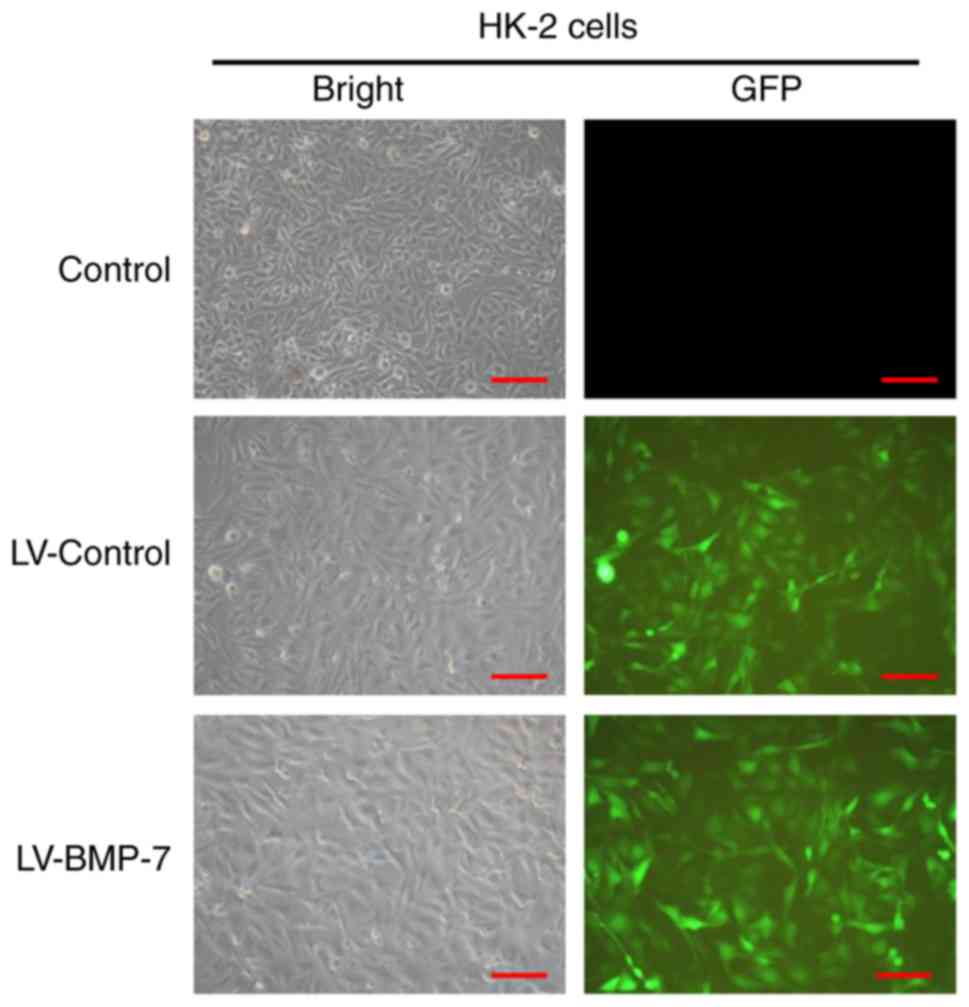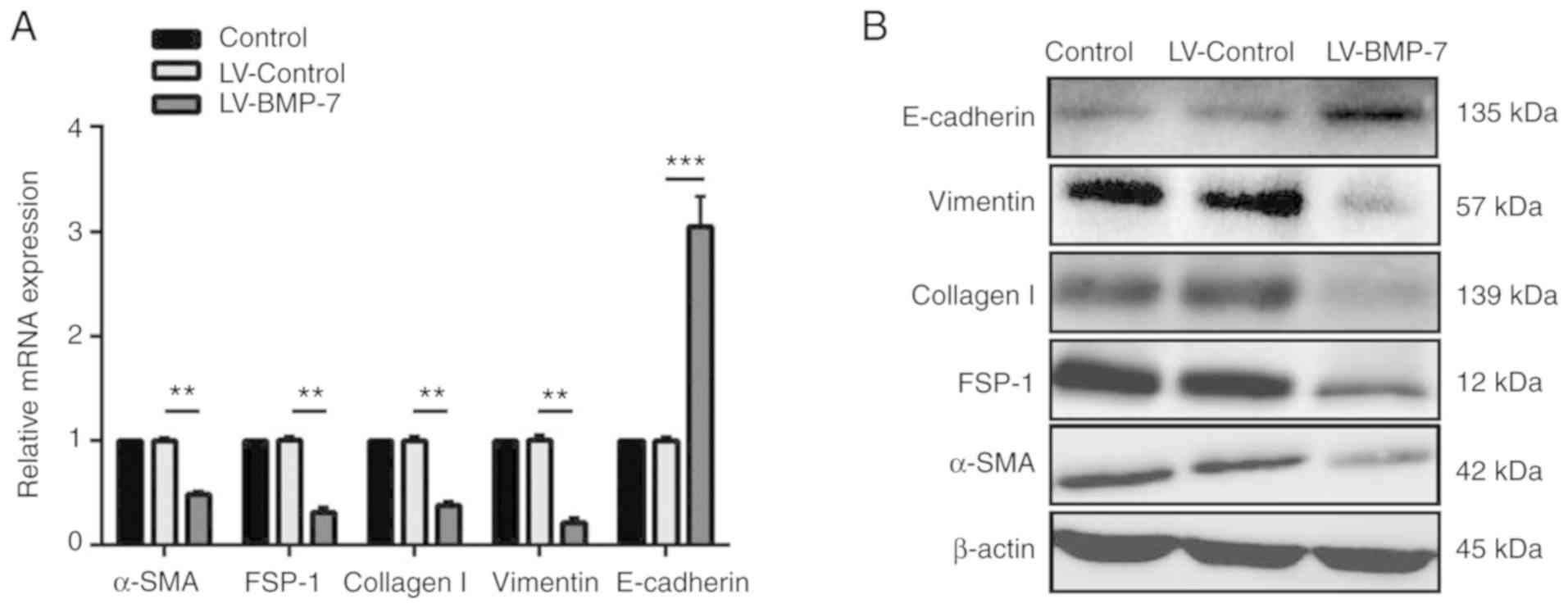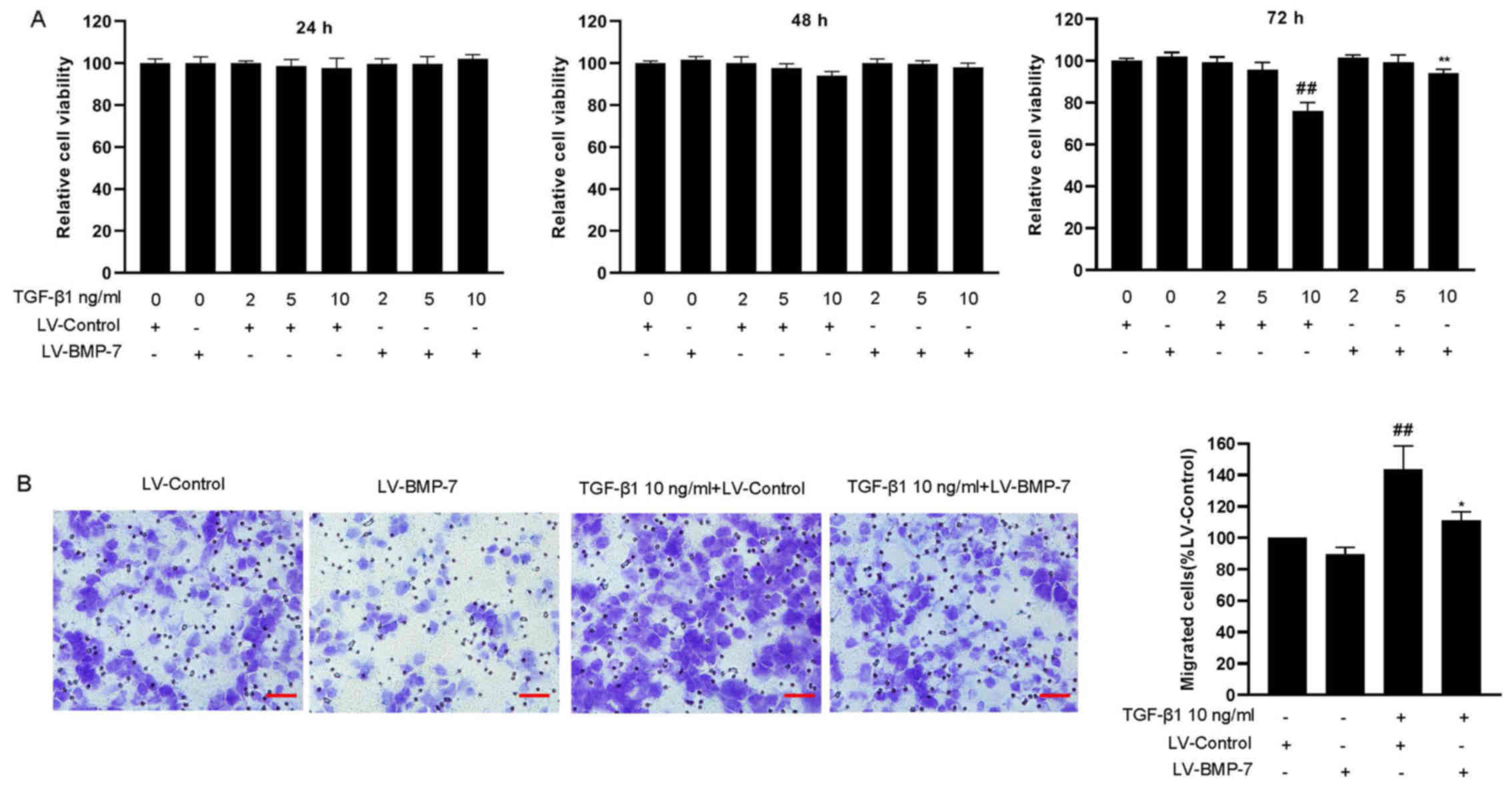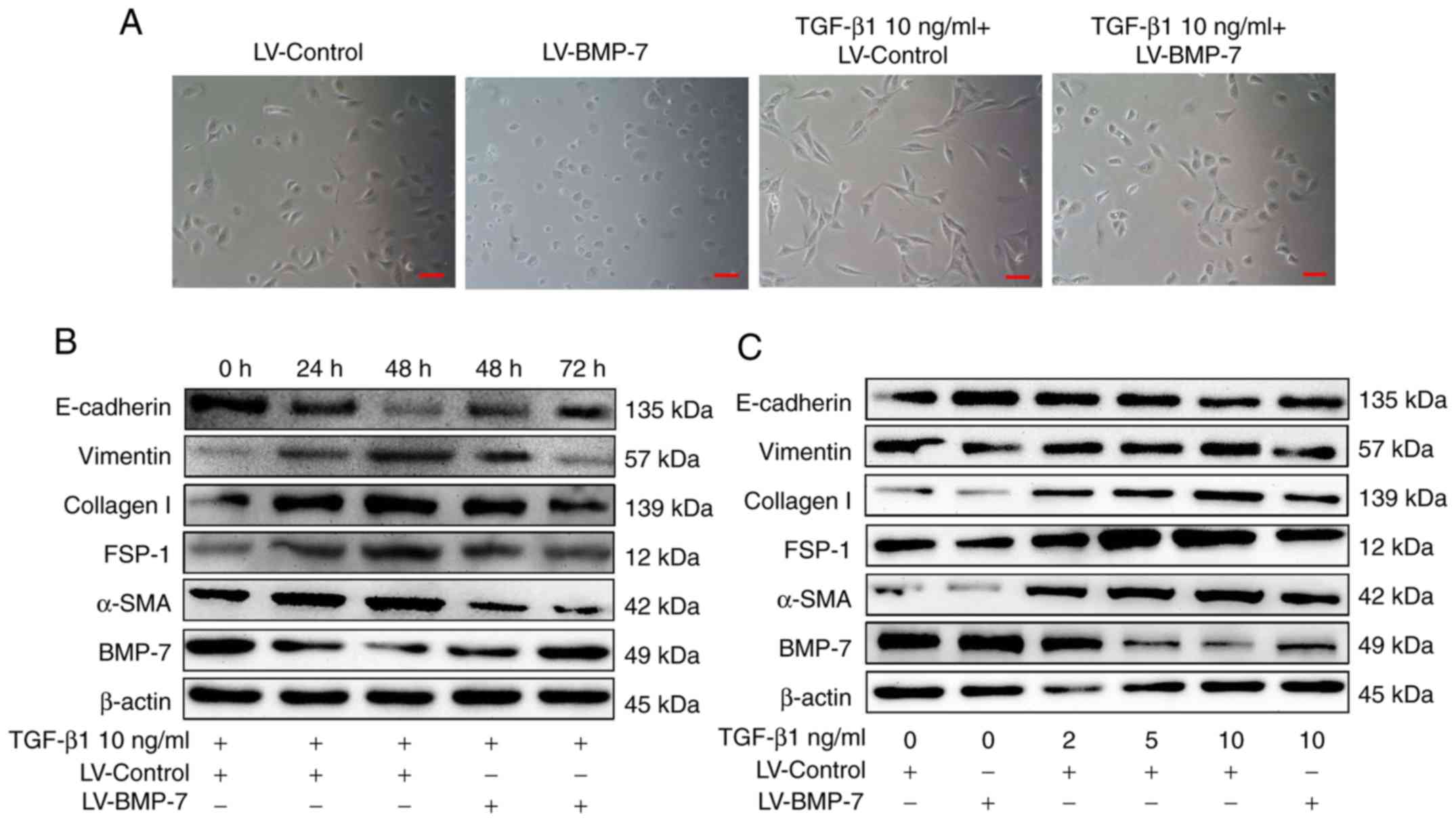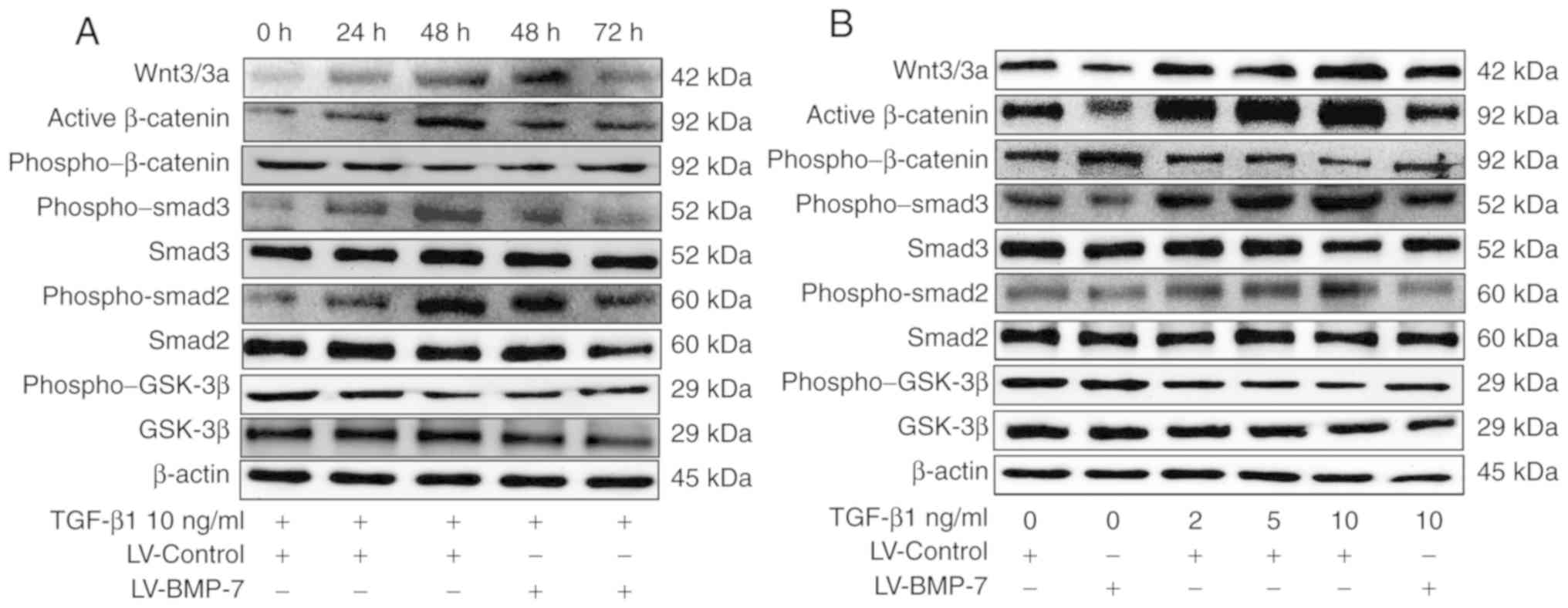|
1
|
Berchtold L, Ponte B, Moll S, Hadaya K,
Seyde O, Bachtler M, Vallee JP, Martin PY, Pasch A and de Seigneux
S: Phosphocalcic markers and calcification propensity for
assessment of interstitial fibrosis and vascular lesions in kidney
allograft recipients. PLoS One. 11:e01679292016. View Article : Google Scholar : PubMed/NCBI
|
|
2
|
Zheng GH, Wang YJ, Wen X, Han XR, Shen M,
Wang S, Zhuang J, Zhang ZF, Wang L, Hu B, et al: Silencing of
SOCS-1 and SOCS-3 suppresses renal interstitial fibrosis by
alleviating renal tubular damage in a rat model of hydronephrosis.
J Cell Biochem. 119:2200–2211. 2018. View Article : Google Scholar : PubMed/NCBI
|
|
3
|
Mengel M: Deconstructing interstitial
fibrosis and tubular atrophy: A step toward precision medicine in
renal transplantation. Kidney Int. 92:553–555. 2017. View Article : Google Scholar : PubMed/NCBI
|
|
4
|
Farris AB and Colvin RB: Renal
interstitial fibrosis: Mechanisms and evaluation. Curr Opin Nephrol
Hypertens. 21:289–300. 2012. View Article : Google Scholar : PubMed/NCBI
|
|
5
|
Liu Y: New insights into
epithelial-mesenchymal transition in kidney fibrosis. J Am Soc
Nephrol. 21:212–222. 2010. View Article : Google Scholar : PubMed/NCBI
|
|
6
|
Song Y, Peng C, Lv S, Cheng J, Liu S, Wen
Q, Guan G and Liu G: Adipose-derived stem cells ameliorate renal
interstitial fibrosis through inhibition of EMT and inflammatory
response via TGF-β1 signaling pathway. Int Immunopharmacol.
44:115–122. 2017. View Article : Google Scholar : PubMed/NCBI
|
|
7
|
Huang S and Susztak K: Epithelial
plasticity versus EMT in kidney fibrosis. Trends Mol Med. 22:4–6.
2016. View Article : Google Scholar : PubMed/NCBI
|
|
8
|
Xu XY, Chai JJ, Chen YP, Rui HL, Wang YY,
Dong HR, Man YL and Cheng H: Hirsutella sinensis attenuates
aristolochic acid-induced renal tubular epithelial-mesenchymal
transition by inhibiting TGF-β1 and snail expression. PLoS One.
11:e01492422016. View Article : Google Scholar : PubMed/NCBI
|
|
9
|
Li A, Zhang X, Shu M, Wu M, Wang J, Zhang
J, Wang R, Li P and Wang Y: Arctigenin suppresses renal
interstitial fibrosis in a rat model of obstructive nephropathy.
Phytomedicine. 30:28–41. 2017. View Article : Google Scholar : PubMed/NCBI
|
|
10
|
Sutariya B, Jhonsa D and Saraf MN: TGF-β:
The connecting link between nephropathy and fibrosis.
Immunopharmacol Immunotoxicol. 38:39–49. 2016. View Article : Google Scholar : PubMed/NCBI
|
|
11
|
Ninichuk V, Gross O, Segerer S, Hoffmann
R, Radomska E, Buchstaller A, Huss R, Akis N, Schlöndorff D and
Anders HJ: Multipotent mesenchymal stem cells reduce interstitial
fibrosis but do not delay progression of chronic kidney disease in
collagen4A3-deficient mice. Kidney Int. 70:121–129. 2006.
View Article : Google Scholar : PubMed/NCBI
|
|
12
|
Cao J, Wang W, Li Y, Xia J, Peng Y, Zhang
Y and Xia A: Artesunate attenuates unilateral ureteral
obstruction-induced renal fibrosis by regulating the expressions of
bone morphogenetic protein-7 and uterine sensitization-associated
gene-1 in rats. Int Urol Nephrol. 48:619–629. 2016. View Article : Google Scholar : PubMed/NCBI
|
|
13
|
Wang Z, Zhao J, Zhang J, Wei J, Zhang J
and Huang Y: Protective effect of BMP-7 against aristolochic
acid-induced renal tubular epithelial cell injury. Toxicol Lett.
198:348–357. 2010. View Article : Google Scholar : PubMed/NCBI
|
|
14
|
Meng XM, Chung AC and Lan HY: Role of the
TGF-β/BMP-7/Smad pathways in renal diseases. Clin Sci (Lond).
124:243–254. 2013. View Article : Google Scholar : PubMed/NCBI
|
|
15
|
Ohigashi M, Imai N, Toba H, Kobara M and
Nakata T: Pitavastatin exhibits protective effects on podocytes
accompanied by BMP-7 up-regulation and Rho suppression.
Pharmacology. 97:265–276. 2016. View Article : Google Scholar : PubMed/NCBI
|
|
16
|
Kabuto Y, Morihara T, Sukenari T, Kida Y,
Oda R, Arai Y, Sawada K, Matsuda K, Kawata M, Tabata Y, et al:
Stimulation of rotator cuff repair by sustained release of bone
morphogenetic protein-7 using a gelatin hydrogel sheet. Tissue Eng
Part A. 21:2025–2033. 2015. View Article : Google Scholar : PubMed/NCBI
|
|
17
|
Sugiyama O, An DS, Kung SP, Feeley BT,
Gamradt S, Liu NQ, Chen IS and Lieberman JR: Lentivirus-mediated
gene transfer induces long-term transgene expression of BMP-2 in
vitro and new bone formation in vivo. Mol Ther. 11:390–398. 2005.
View Article : Google Scholar : PubMed/NCBI
|
|
18
|
Duangkumpha K, Techasen A, Loilome W,
Namwat N, Thanan R, Khuntikeo N and Yongvanit P: BMP-7 blocks the
effects of TGF-β-induced EMT in cholangiocarcinoma. Tumour Biol.
35:9667–9676. 2014. View Article : Google Scholar : PubMed/NCBI
|
|
19
|
Liang D, Wang Y, Zhu Z, Yang G, An G, Li
X, Niu P, Chen L and Tian L: BMP-7 attenuated silica-induced
pulmonary fibrosis through modulation of the balance between
TGF-β/Smad and BMP-7/Smad signaling pathway. Chem Biol Interact.
243:72–81. 2016. View Article : Google Scholar : PubMed/NCBI
|
|
20
|
Liu JH, He L, Zou ZM, Ding ZC, Zhang X,
Wang H, Zhou P, Xie L, Xing S and Yi CZ: A novel inhibitor of
homodimerization targeting MyD88 ameliorates renal interstitial
fibrosis by counteracting TGF-β1-induced EMT in vivo and in vitro.
Kidney Blood Press Res. 43:1677–1687. 2018. View Article : Google Scholar : PubMed/NCBI
|
|
21
|
Peng C, Zhao H, Chen W, Song Y, Wang X, Li
J, Qiao Y, Wu D, Ma S, Wang X and Gao C: Identification of SHCBP1
as a novel downstream target gene of SS18-SSX1 and its functional
analysis in progression of synovial sarcoma. Oncotarget.
7:66822–66834. 2016. View Article : Google Scholar : PubMed/NCBI
|
|
22
|
Livak KJ and Schmittgen TD: Analysis of
relative gene expression data using real-time quantitative PCR and
the 2(-Delta Delta C(T)) method. Methods. 25:402–408. 2001.
View Article : Google Scholar : PubMed/NCBI
|
|
23
|
Yan D, Deng S, Gan W, Li S and Li Y:
Curcumol attenuates epithelial-mesenchymal transition of
nasopharyngeal carcinoma cells via TGF-β1. Mol Med Rep.
17:7513–7520. 2018.PubMed/NCBI
|
|
24
|
Peng C, Song Y, Chen W, Wang X, Liu X,
Wang F, Wu D, Ma S, Wang X and Gao C: FLVCR1 promotes the
proliferation and tumorigenicity of synovial sarcoma through
inhibiting apoptosis and autophagy. Int J Oncol. 2018. View Article : Google Scholar
|
|
25
|
Loboda A, Sobczak M, Jozkowicz A and Dulak
J: TGF-β1/Smads and miR-21 in renal fibrosis and inflammation.
Mediators Inflamm. 2016:83192832016. View Article : Google Scholar : PubMed/NCBI
|
|
26
|
Moore LD, Isayeva T, Siegal GP and
Ponnazhagan S: Silencing of transforming growth factor-β1 in situ
by RNA interference for breast cancer: Implications for
proliferation and migration in vitro and metastasis in vivo. Clin
Cancer Res. 14:4961–4970. 2008. View Article : Google Scholar : PubMed/NCBI
|
|
27
|
Wei SY, Wang YX, Zhang QF, Zhao SL, Diao
TT, Li JS, Qi WR, He YX, Guo XY, Zhang MZ, et al: Multiple
mechanisms are involved in salt-sensitive hypertension-induced
renal injury and interstitial fibrosis. Sci Rep. 7:459522017.
View Article : Google Scholar : PubMed/NCBI
|
|
28
|
Wang YY, Jiang H, Pan J, Huang XR, Wang
YC, Huang HF, To KF, Nikolic-Paterson DJ, Lan HY and Chen JH:
Macrophage-to-myofibroblast transition contributes to interstitial
fibrosis in chronic renal allograft injury. J Am Soc Nephrol.
28:2053–2067. 2017. View Article : Google Scholar : PubMed/NCBI
|
|
29
|
Cao J, Li Y, Peng Y, Zhang Y, Li H, Li R
and Xia A: Febuxostat prevents renal interstitial fibrosis by the
activation of BMP-7 signaling and inhibition of USAG-1 expression
in rats. Am J Nephrol. 42:369–378. 2015. View Article : Google Scholar : PubMed/NCBI
|
|
30
|
Liang D, An G, Zhu Z, Wang Y, Yang G, Li
X, Niu P, Chen L and Tian L: The protective effects of bone
morphogenetic protein-7 against epithelial injury and matrix
metalloproteases upregulation induced by silica in vitro. Hum Exp
Toxicol. 36:892–900. 2017. View Article : Google Scholar : PubMed/NCBI
|
|
31
|
Li X, An G, Wang Y, Liang D, Zhu Z, Lian
X, Niu P, Guo C and Tian L: Anti-fibrotic effects of bone
morphogenetic protein-7-modified bone marrow mesenchymal stem cells
on silica-induced pulmonary fibrosis. Exp Mol Pathol. 102:70–77.
2017. View Article : Google Scholar : PubMed/NCBI
|
|
32
|
Wang LP, Dong JZ, Xiong LJ, Shi KQ, Zou
ZL, Zhang SN, Cao ST, Lin Z and Chen YP: BMP-7 attenuates liver
fibrosis via regulation of epidermal growth factor receptor. Int J
Clin Exp Pathol. 7:3537–3547. 2014.PubMed/NCBI
|
|
33
|
Liu J, Zhong Y, Liu G, Zhang X, Xiao B,
Huang S, Liu H and He L: Role of Stat3 signaling in control of EMT
of tubular epithelial cells during renal fibrosis. Cell Physiol
Biochem. 42:2552–2558. 2017. View Article : Google Scholar : PubMed/NCBI
|
|
34
|
Chen Q, Yang W, Wang X, Li X, Qi S, Zhang
Y and Gao MQ: TGF-β1 induces EMT in bovine mammary epithelial cells
through the TGFβ1/Smad signaling pathway. Cell Physiol Biochem.
43:82–93. 2017. View Article : Google Scholar : PubMed/NCBI
|
|
35
|
Bai J, Xiao X, Zhang X, Cui H, Hao J, Han
J and Cao N: Erythropoietin inhibits hypoxia-induced
epithelial-to-mesenchymal transition via upregulation of miR-200b
in HK-2 cells. Cell Physiol Biochem. 42:269–280. 2017. View Article : Google Scholar : PubMed/NCBI
|
|
36
|
Huang S, Liu F, Niu Q, Li Y, Liu C, Zhang
L, Ni D and Pu X: GLIPR-2 overexpression in HK-2 cells promotes
cell EMT and migration through ERK1/2 activation. PLoS One.
8:e585742013. View Article : Google Scholar : PubMed/NCBI
|
|
37
|
Zhou J, Cheng H, Wang Z, Chen H, Suo C,
Zhang H, Zhang J, Yang Y, Geng L, Gu M and Tan R: Bortezomib
attenuates renal interstitial fibrosis in kidney transplantation
via regulating the EMT induced by TNF-α-Smurf1-Akt-mTOR-P70S6K
pathway. J Cell Mol Med. 23:5390–5402. 2019. View Article : Google Scholar : PubMed/NCBI
|
|
38
|
Nlandu-Khodo S, Neelisetty S, Phillips M,
Manolopoulou M, Bhave G, May L, Clark PE, Yang H, Fogo AB, Harris
RC, et al: Blocking TGF-β and β-Catenin epithelial crosstalk
exacerbates CKD. J Am Soc Nephrol. 28:3490–3503. 2017. View Article : Google Scholar : PubMed/NCBI
|
|
39
|
Lin X, Zha Y, Zeng XZ, Dong R, Wang QH and
Wang DT: Role of the Wnt/β-catenin signaling pathway in inducing
apoptosis and renal fibrosis in 5/6-nephrectomized rats. Mol Med
Rep. 15:3575–3582. 2017. View Article : Google Scholar : PubMed/NCBI
|
|
40
|
Xue H, Xiao Z, Zhang J, Wen J, Wang Y,
Chang Z, Zhao J, Gao X, Du J and Chen YG: Disruption of the Dapper3
gene aggravates ureteral obstruction-mediated renal fibrosis by
amplifying Wnt/β-catenin signaling. J Biol Chem. 288:15006–15014.
2013. View Article : Google Scholar : PubMed/NCBI
|
|
41
|
Jiang MQ, Wang L, Cao AL, Zhao J, Chen X,
Wang YM, Wang H and Peng W: HuangQi decoction improves renal
tubulointerstitial fibrosis in mice by inhibiting the up-regulation
of Wnt/β-catenin signaling pathway. Cell Physiol Biochem.
36:655–669. 2015. View Article : Google Scholar : PubMed/NCBI
|
|
42
|
Hsu YC, Chang PJ, Ho C, Huang YT, Shih YH,
Wang CJ and Lin CL: Protective effects of miR-29a on diabetic
glomerular dysfunction by modulation of DKK1/Wnt/β-catenin
signaling. Sci Rep. 6:305752016. View Article : Google Scholar : PubMed/NCBI
|
|
43
|
Tsujimura T, Idei M, Yoshikawa M, Takase O
and Hishikawa K: Roles and regulation of bone morphogenetic
protein-7 in kidney development and diseases. World J Stem Cells.
8:288–296. 2016. View Article : Google Scholar : PubMed/NCBI
|
|
44
|
Huang Y, Tong J, He F, Yu X, Fan L, Hu J,
Tan J and Chen Z: miR-141 regulates TGF-β1-induced
epithelial-mesenchymal transition through repression of HIPK2
expression in renal tubular epithelial cells. Int J Mol Med.
35:311–318. 2015. View Article : Google Scholar : PubMed/NCBI
|
|
45
|
Peng C, Zhao H, Song Y, Chen W, Wang X,
Liu X, Zhang C, Zhao J, Li J, Cheng G, et al: SHCBP1 promotes
synovial sarcoma cell metastasis via targeting TGF-β1/Smad
signaling pathway and is associated with poor prognosis. J Exp Clin
Cancer Res. 36:1412017. View Article : Google Scholar : PubMed/NCBI
|















